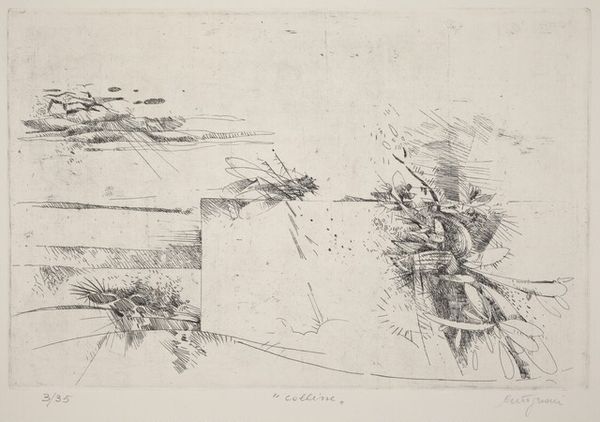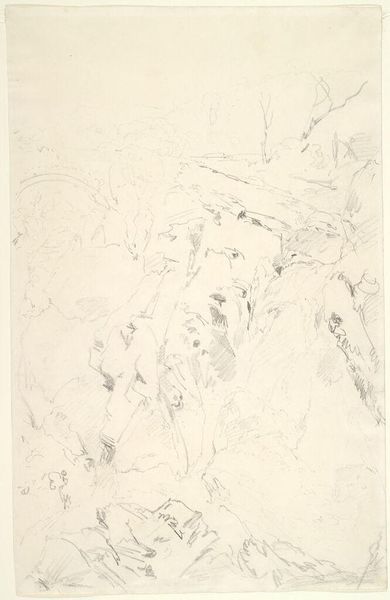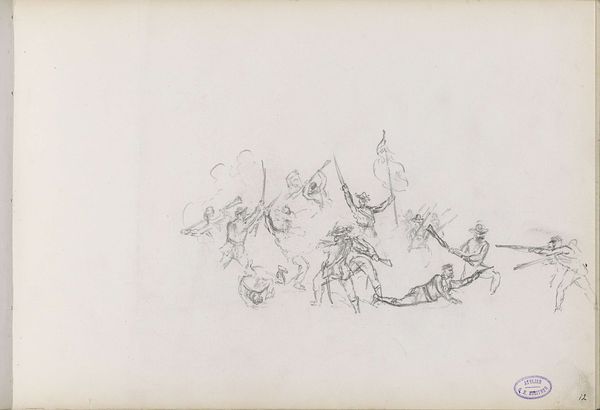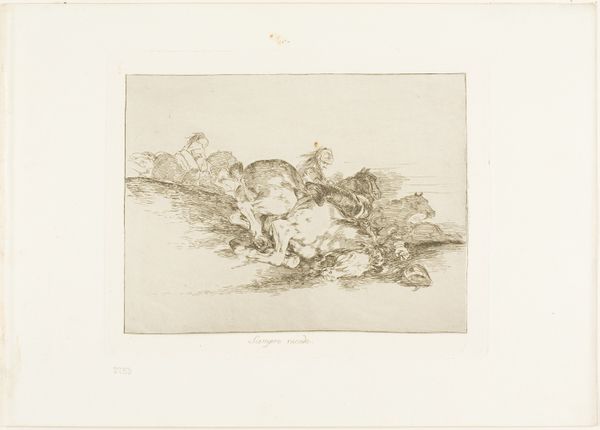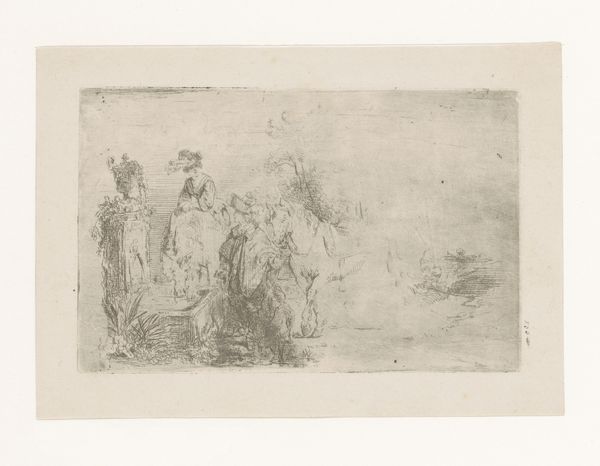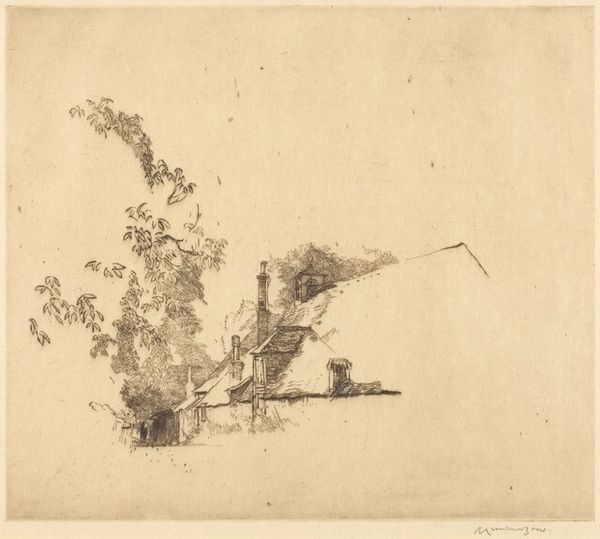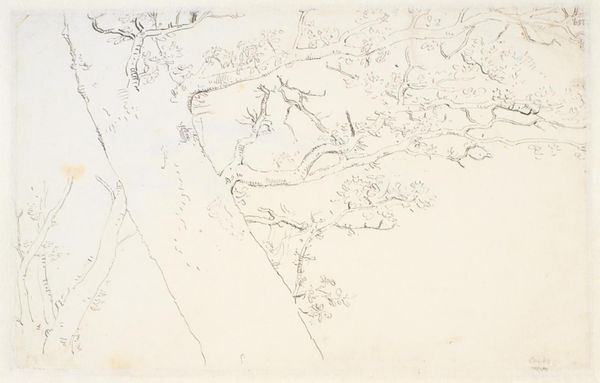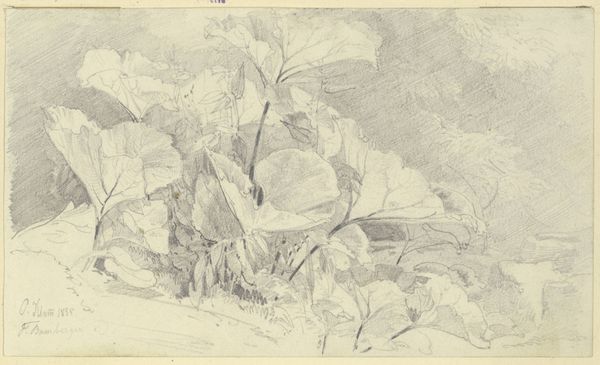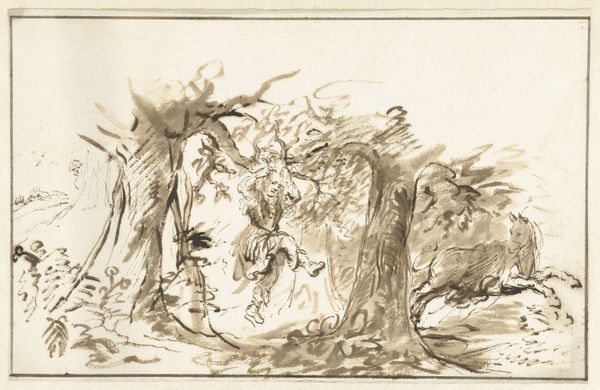
graphic-art, print, etching
#
graphic-art
# print
#
etching
#
abstraction
Dimensions: plate: 23.9 x 35.9 cm (9 7/16 x 14 1/8 in.) sheet: 34.9 x 50.4 cm (13 3/4 x 19 13/16 in.)
Copyright: National Gallery of Art: CC0 1.0
Curator: Looking at Giancarlo Tognoni’s "Natura morta" from 1995, we can observe an exploration into abstraction through printmaking, specifically using etching techniques. Editor: It feels ghostly, almost like peering into someone's dream. Or maybe a memory, fragmented and delicate. Curator: That’s interesting, the fragmented nature of the still life. We see the results of acid etching on the metal plate creating a world of tonal variations, the physical manipulation of the material becomes paramount in the final product. Notice the plate tone, where a thin layer of ink is left on the plate, to soften and unify the overall image. Editor: It's like the process itself is leaving its mark—literally and figuratively. I'm intrigued by the ghostly suggestion of a head and neck profile on the right, but it might also just be the power of suggestion at play here. The etching allows light to permeate everything. Curator: That ambiguity between the figurative and abstract underscores Tognoni's investigation of the still life genre itself. By focusing on process—on the physical and chemical transformations necessary to create an etching—Tognoni pushes against representational constraints. Editor: True, yet the image holds this strange tension. You almost recognize the elements, suggesting floral forms and vegetal arrangements. You can feel a sense of growth, but they dissolve the closer you try to identify the elements within the frame. It keeps teasing me. Curator: The artist exploits the graphic quality of line through etching techniques to explore the ephemeral and temporal qualities. His still life is very much alive, actively being consumed through these very methods. Editor: That tension makes it rather beautiful. It doesn't present the perfectly posed moment of flourishing life you often expect of a still life, instead capturing the flow. We’re left lingering in the suggestion of form, appreciating not just the what, but the how of things. Curator: So, we see a still life deconstructed, brought to life again through graphic arts techniques and abstraction. Editor: Absolutely. A haunting and rather beautiful reminder that stillness itself is just a moment in an ever-changing flow.
Comments
No comments
Be the first to comment and join the conversation on the ultimate creative platform.
